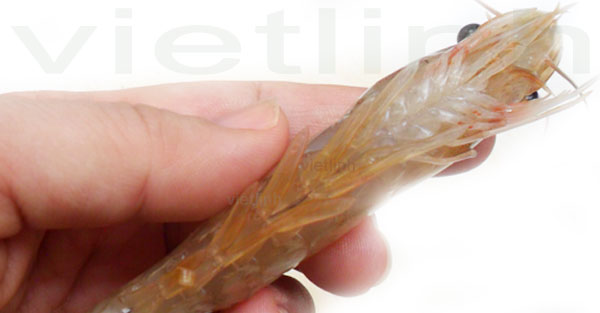2.5.7. Black gill disease
* Signs:
- Shrimp with this disease often has its gill color changed from ivory white to brown or black with lesions in gills.
- Shrimp has respiratory difficulties, floats or clings to the shore, eats less or skips meals and dies. There are also shrimp deaths in a large scale when the levels of oxygen fall below the threshold of adaptation.
* Pathogen:
- Because shrimp lives in water environment contaminated by sediment, organic matters or algae, these substances bind to shrimp gills and cause the disease.
- In the pond with high levels of NH3 and NO2, black gill disease can also occur.
- In addition, shrimp has black gill also because black melanin, a natural product of the immune system of shrimp and crab, appears in shrimp gills.
- The disease is common in whiteleg shrimp ponds from the 2nd month of farming.
* Preventions - Treatments:
The causes of black gill disease are from contaminated environment, too many organic substances at the bottom of the ponds, and high levels of toxic gas. Thus, use these solutions:
- Use bioproducts to clean the ponds and absorb toxic gases.
- Feed shrimp with vitamin C.
- Change water at the bottom if it is appropriate to the conditions.
Source: Temporary process for safe brackish-water shrimp farming in areas affected by diseases in Vietnam. According to The Official Dispatch No. 10/TCTS-NTTS. January 6th, 2015. Vietnamese Directorate of Fisheries
Viet Linh 2015. Translated by Sonia Linh V.
